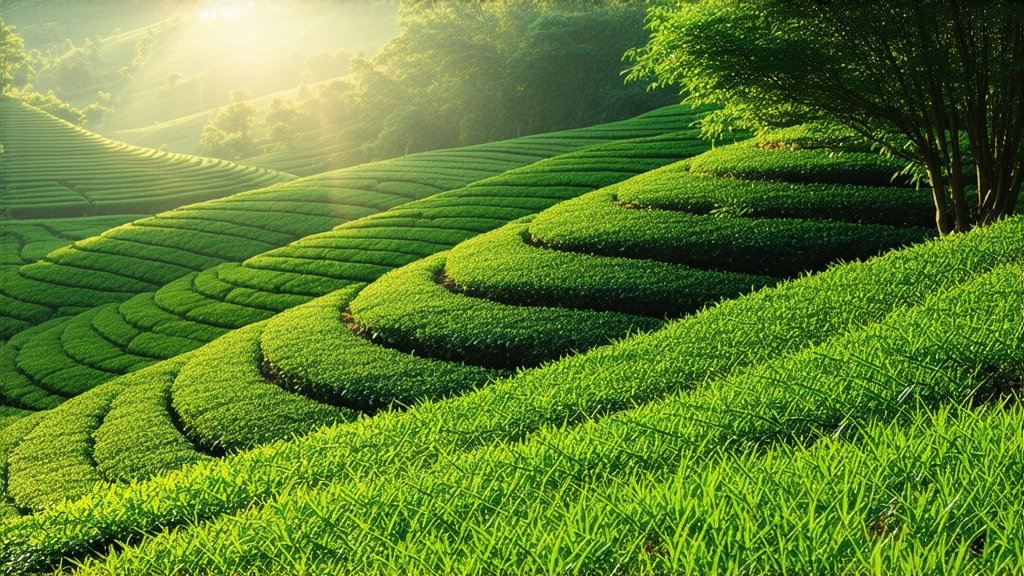
In the heart of China's Zhejiang province, nestled amidst rolling hills and mist-shrouded valleys, lies the birthplace of one of the world's most revered green teas – Longjing. Translated as "Dragon Well," this exceptional tea has been enchanting connoisseurs for centuries with its unique flavor profile, delicate aroma, and captivating history. Join us as we embark on a journey through the verdant landscapes of Longjing, exploring its origins, varieties, meticulous craftsmanship, and the art of its appreciation.
A Glimpse into History
Longjing's tale begins in ancient times, with legend attributing its discovery to the esteemed Emperor Qianlong during his visit to the West Lake (Xihu) region. As the story goes, the emperor stumbled upon a humble temple where he was served a cup of tea so exquisite that he bestowed upon it the name "Longjing," after the nearby well believed to be the dwelling place of dragons. This association with imperial favor cemented Longjing's status as a tea of unparalleled quality and prestige.
Varieties and Grades
Longjing tea is primarily cultivated around the picturesque West Lake area, with its finest expressions coming from designated first-grade production zones such as Shi Feng, Longjing, and Meijiawu. These regions benefit from optimal microclimates, fertile soil, and pristine water sources, contributing to the tea's distinctive character. Within these zones, Longjing is further classified into several grades based on factors like picking season, leaf size, and overall quality. The highest grade, known as Xu Cha or Pre-Ming tea, is harvested before Qingming Festival (Tomb-Sweeping Day), when the tenderest leaves are plucked, ensuring maximum freshness and nutritional value.
The Art of Craftsmanship
The magic of Longjing lies not only in its terroir but also in the intricate process by which it is transformed from freshly picked leaves into dry, aromatic tea. The traditional method involves several meticulous steps:
-
Picking: Only the top two leaves and bud are selected, often requiring skilled hands to ensure uniformity and quality.
-
Fixation: Freshly harvested leaves undergo a brief pan-frying to halt oxidation, preserving their vibrant green color and fresh aroma. This step also helps to remove excess moisture and prepare the leaves for shaping.
-
Shaping: Using specialized bamboo baskets or woks, artisans skillfully roll and press the leaves, imparting a flat, needle-like appearance reminiscent of dragon scales. This process requires both strength and finesse, as each movement shapes the tea while maintaining its integrity.
-
Second Fixation and Drying: After initial shaping, the leaves undergo another round of pan-frying to further reduce moisture content and enhance their crisp texture. They are then carefully dried over low heat until they reach the desired level of dryness.
-
Sorting and Grading: Finally, the finished tea is sorted according to size, shape, and quality, ensuring consistency throughout each batch.
The Symphony of Sensory Delight
To truly appreciate Longjing, one must engage all senses in the act of tasting. Here’s a guide to savoring this elixir:
-
Visual Appreciation: Observe the tea leaves as they unfurl gracefully in hot water, revealing their jade-green hue and elegant shape.
-
Aroma: Inhale deeply to detect subtle notes of floral sweetness, chestnut undertones, and a hint of roasted nuttiness—a testament to its unique processing method.
-
Flavor: Take your first sip slowly, allowing the tea to coat your palate. Notice the initial vegetal freshness followed by a mellow umami taste, with a lingering aftertaste that speaks of its depth and complexity.
-
Texture: Feel the smooth, velvety texture of the liquid as it glides across your tongue, a result of expert crafting techniques.
-
Aftertaste: Pay attention to the clean, refreshing finish that leaves you yearning for another cup.
Cultural Significance and Modern Reverence
Beyond its physical attributes, Longjing holds deep cultural significance in Chinese society. It symbolizes purity, tranquility, and harmony, often featured in traditional ceremonies and rituals. In contemporary times, Longjing continues to be celebrated worldwide as a symbol of Chinese tea culture, representing the nation's rich heritage and dedication to excellence in tea production. Its popularity extends far beyond China's borders, captivating tea enthusiasts globally who seek authentic experiences and connections with ancient traditions.
In conclusion, Longjing stands as a testament to China's enduring tea legacy, embodying the perfect balance between nature's bounty and human ingenuity. From its storied past to its meticulous present, every aspect of this remarkable green tea invites exploration and admiration. Whether enjoyed in quiet contemplation or shared among friends, Longjing offers a timeless escape into the world of Chinese tea artistry, inviting all who partake to become part of its continuing story.